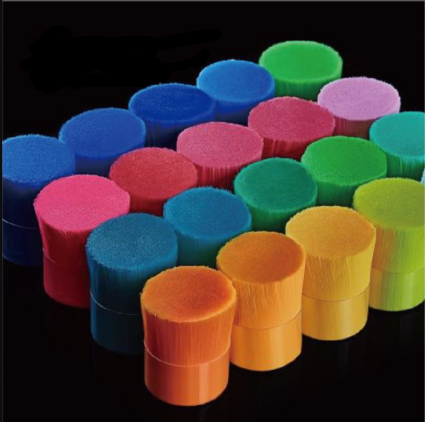SYNTHETIC FILAMENT BRUSHES: A GLOBAL TREND
Supply chain challenges spur innovation in the brush market.
The global trend towards a progressive increase in the use of synthetic filaments instead of natural bristles in the brush and paintbrush industry has continued uninterrupted for over 20 years. The official trade data from the world’s leading producer of natural bristles, China, shows that national exports of this product decreased by over 40% between 2014 and 2020. A clear sign of how the transition to synthetic filament in the brush and paintbrush industry’s international supply chain is intensifying.
Synthetic filament was originally developed as a solution to specific issues related to the scarcity of Chinese natural bristles at a particular time. Then, various events (wars, anti-dumping regulations, protectionism in some countries, changes in livestock, outbreaks of diseases on farms, and more stringent controls on environmental management in the processing of sows) generated a steady increase in the transition from natural bristles to synthetic filaments. Over time, synthetic solutions have increasingly become the predominant choice of manufacturers, not only for the cost, but also for the advantages of their applications.
There are many reasons for the marked acceleration in the use of synthetic bristles that the global market has witnessed in recent years. In addition to the cost, another important cause is certainly the growth in demand for water-based paints. When it comes to applying these paints, synthetic filament brushes offer the same or even better performance. In addition, continuous innovation in terms of materials, models, and formats, have achieved not only visual similarity but also matched the characteristics and utility of natural bristles.
However, there isn’t a homogeneous diffusion of synthetic filaments throughout the world brush market. In many cases, these differences in distribution are due to cultural idiosyncrasies, which generate myths that are more difficult to counter in some countries than in others. In fact, there are areas, including a large number of English-speaking nations, where 100% synthetic solutions are widely used and have almost completely replaced natural-bristle brushes. In Canada, the United States, the United Kingdom, and Australia, "synthetic" is not synonymous with poor quality. In other areas, including much of mainland Europe, producers are still in a transition phase from mixed natural and synthetic filament brushes to 100% synthetic products. This is the case in Italy, Spain, Germany and Portugal, where mixed blends are still used, even if the number of product lines made entirely with synthetic filaments is growing. Natural bristle brushes are still more popular in South America, where the transition to synthetic options is slower than in Europe. In fact, in many South American countries, "synthetic" still has a certain negative connotation, so producers have to make more of an effort to disprove this myth in that market.
As far as production is concerned, China is the world leader both for natural bristles – followed by India – and for synthetic filaments. There is also significant production of synthetic filaments in the U.S., and now some very interesting options in India using new technologies.
The segmentation of the international market, with the different levels of quality and types requested, is inevitably also a reflection of the level of development in the countries themselves. And, this is influenced by not only economic but also cultural reasons. So, the sales price of the brushes in each country also reflects the difference in quality requested by professional painters and decorators. There are markets where the demand for high-quality products takes precedence over price, and vice versa. This also affects how quickly synthetic filament brushes are adopted in a given market.
Undoubtedly, looking at the general context, the recent global supply chain crisis has also affected the brush industry. Covid, price increases in raw materials, logistics and energy, the war in Ukraine, and threats of armed conflict in other areas are all critical issues that are impacting the industry, in addition to the ongoing shortage of natural bristles. Some feel that it could be advantageous to shift supply chains to third countries in order to diversify. There is also the hypothesis of regionalizing production to reduce logistics costs and risks. The brush manufacturing sector has had a variety of responses: some have chosen to generate excess stock to guarantee the supply of their products, others have opted to reduce stock, hoping for an improvement in the overall situation. Clearly there is no single solution for dealing with these events, it depends a lot on the situation of a company and the country in which it is located.
Finally, it is important to consider the indispensable need to initiate a continuous training and collaboration process that brings together all of the links in the international supply chains. The accelerated paradigm shift towards the use of synthetic filament as a new global standard involves a commitment across the entire value chain with regard to the need for continuous training, from material producers, to brush manufacturers, to end users. When it comes to training, more mature markets, which have already taken this step, could serve as an effective guide for other markets.
Author Ignacio Pacci

